
There is never enough time to explore everything on our travels. There are always intriguing buildings, signs and churches that we say we really must explore at some point… and never get the chance to see. So, if I get the chance at any point, I will try to rectify that. One grey day between Christmas and New Year, when I had a little time to spare, I took the car out to explore some of the lanes and villages that criss-cross ‘our’ patch in Derbyshire.

The village of Elton is one we have driven through on more occasions than we could count. We have passed through there every time we have visited the prehistoric landscape around Robin Hood’s Stride, Cratcliffe Tor and the Nine Stones Close stone circle…and we had never stopped to explore. Yet, Elton is an old village, mentioned in the Domesday Book of 1086 as belonging Henry de Ferrers, one of the invading Normans who was granted extensive lands by his newly-enthroned king. There was bound to be something of interest in the village, but the church, looking only a couple of hundred years old and therefore relatively modern, had never really demanded that we stop.

The more times you drive past a place without stopping, the less likely it is that you will ever take the time to see what you might be missing. The familiar becomes almost invisible, unless you make a definite decision to explore and you never know what you might find. The most unprepossessing façade may hide unexpected treasures just as easily as the most ornate shell may conceal and empty heart.

The problem with the church at Elton is its history and the lead mines. A Norman church, dedicated to St Margaret, once stood here. It was one of the chapelries of Youlgreave that was given to Leicester Priory in the late twelfth century, and by the time of the Reformation in the sixteenth century, was imposing enough to have three aisles and a ring of three bells. It was around this time that those in charge of the church applied for permission to dig for ore in the church grounds. Permission was granted as long as all proceeds went into the maintenance of the church. Unfortunately, it may well have been this attempt to subsidise the church that caused the subsidence that brought the steeple crashing down on the nave in 1800.

The church was completely rebuilt over the next few years, at a cost of fifteen hundred pounds raised by private subscription. Today, the simple and homely building bears few physical traces of its past… just a few scraps of carved stone, a cross base and a wall at the bottom of the churchyard.

Nor was this the only catastrophe to befall this little church. During the rebuilding, the old font was taken outside and left in the churchyard. It was never reinstalled and, in 1833, the village allowed the font to be taken to Youlgreave. Its new keepers, recognising the importance, value and rarity of this twelfth century Norman font, carved with a salamander, promptly installed it in their church. Acrimony ensued when the village of Elton realised their loss and wanted the font to be returned. Youlgreave refused and Elton was obliged to make do with a reproduction. In the 1870s, the then Lord of the Manor, William Pole Thornhill, paid for an exact replica to be created that still stands in the church at Elton.

The church itself is a simple, single-celled building with a central aisle. The windows glow with colour, even on the dullest day. They are curious windows, some containing contain portraits inset as faces for traditional subjects. The faces, though beautifully executed, seem odd and out of place… and it is quite a strange feeling to see people gazing back at you across the years from their own memorials.

One interesting find was a copy of the Protestation of 1641, framed on a wall near the back of the church. The Protestation was one of three loyal oaths imposed upon the populace in an attempt to preserve the Protestant Reformation and avert civil war. Every male over eighteen was to sign, or make their mark beside their names, pledging allegiance to King Charles I and the Church of England. No man could hold office in Church or State without that signature. The attempt to prevent war was doomed to failure. King Charles, held personally responsible for the deaths caused by the Civil War would eventually be defeated, convicted of treason against his people and beheaded. The monarchy was replaced by Cromwell’s short-lived and Puritanical rule until the throne was restored under one of the best-loved monarchs of history, the Black Boy, King Charles II.

Looking at the document in its frame through the lens of time and knowing what was to come is incredibly moving. For the most part, the signatories of the Protestation in this tiny rural village could not write, as the marks beside their names attest. When they made their marks, had they any idea what was happening in the world around them? I wondered if any of them had fought in the Civil War? There was no standing army, just the Trained Bands, and both sides called first for volunteers and, when that was not enough to feed the furnaces of the war machine, forcibly conscripted men to be soldiers. Three hundred thousand died… around six per cent of the population at that time. Do we even know their names?

They say that you cannot judge a book by its cover, and nor can you judge a church by its surface. All Saints at Elton, though not the most impressive building, had certainly made its mark on me. From its war memorials to its stained glass, the church at the heart of this little community remembered its own, preserving their part in the story of the village. Their story is our story… part of the history of our land and part of the greater human journey that shapes our own. These quiet churches remember, even though we may forget their names.








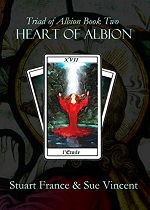






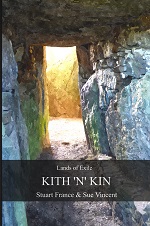


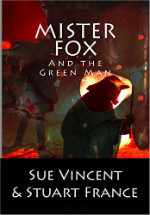





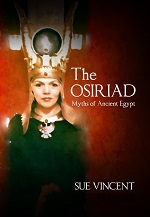











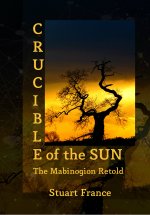


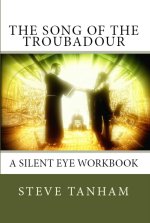


The stained glass is beautiful. You visit the most interesting places!
LikeLiked by 2 people
This was surprisingly full of interesting things 🙂
LikeLiked by 2 people
Were you not expecting much?
LikeLiked by 1 person
Not looking at the outside… but that is never a way to judge anything 🙂
LikeLiked by 2 people
Oh, I agree. I did that once. Boy, was I surprised when I walked in! 🙂
LikeLiked by 1 person
Some of the best ones we have found have seemed unremarkable 🙂
LikeLiked by 2 people
Isn’t History wonderful! Fascinating to visit somewhere, look in awe at the stunning architecture, buildings and stain glass windows then learn about the people from that time. Such an interesting post Sue 🙂
LikeLike
Thanks, Sam. I do love these little contry churches… so much more human than the big cathedrals. 🙂
LikeLiked by 1 person
Yes they are 😊
LikeLiked by 1 person
Reblogged this on anita dawes and jaye marie.
LikeLike
Thanks for sharing, Jaye x
LikeLiked by 1 person
This insignificant little church had quite a lot to say for itself after all. And I loved the real faces in the stained glass windows!
LikeLike
It is ofen the ‘quiet ones’ that say the most 😉
LikeLiked by 1 person
A lovely write-up, Sue. Those stained glass windows are quite creepy.
LikeLike
They are very strange…
LikeLike
I loved the story of the medieval font that went to Youlgrave. It seemed so poignant and strangely
reminiscent of things that happen to us in our own lives! This was a lovely piece about the church and the stories it tells. I’m including a number of churches in my forthcoming book Spirit of Warwickshire – along with ancient houses and other special places. To me, these are places of spiritual resonance, just like this church in Elton, in that they tell a rich story, that arouses feelings of wonder or compassion or pity in us, and also relates to our own lives.
LikeLike
It is the relationshi in which we stand with the old stories told by the land and its peoples that really interets me too. You’ll have to come over with a post about the book when you are ready.
LikeLike
Those stained glass windows are fabulous!
LikeLike
Unusual, aren’t they 🙂
LikeLike
What a wonderful sense of history your photos and writing conveys. I’m off now to follow your link to Robin Hood’s Stride. Robin Hood was my childhood hero. I have only recently read that he is connected to the Green Man and Maid Marion is an manifestation of the Earth Goddess.
LikeLiked by 1 person
The Robin Hood/Green Man connection goes back a very long way…he s one of those symbols that has morphed and evolved to fit the times.
LikeLiked by 1 person
I made a spirit doll a couple of weeks ago that took me into that energy. The concept of positive masculinity as an active principle in nature feels like an emergent archetype (or re-emergent) for our times… ah – I think I feel a blog post coming on 😊 Maybe it will emerge for your next prompt.
LikeLike
Re-emergent…. the penulum is still swinging and we need to find the point of balance between the polarities rather than living in the extremes 🙂
LikeLiked by 1 person
Yes, there is lots to ponder here. Thanks for sharjng your insight.
LikeLiked by 1 person
The history is fascinating. What odd little stories about that place, though I can see why it’s grown on you. 🙂
LikeLike
It is the people 🙂
LikeLiked by 1 person
Reblogged this on Carmel Bendon – author and commented:
I really enjoyed and appreciated the (historical) details of the church in Elton, and I thought that some of my followers might enjoy it too.
LikeLiked by 1 person
Thanks,Carmel 🙂
LikeLike
Very interesting.
LikeLike
It really was 🙂
LikeLiked by 1 person
What a shame about the font, just had a look at the original, how amazing, I have never seen one like it 🙂
LikeLike
I came across the original a good while ago… and was amazed. I’ve neer seen a salamander used for baptism before. It makes sense, symbolically, with the dual links to water and fire for baptism and the descent of the Holy Spirit.
LikeLiked by 1 person
Yes it would. I have seen lots on pew ends, but never on a font. As you say you never know what you are going to find when you walk, hopefully, through the door 🙂
LikeLike
Add Youlgreave to your list 😉
LikeLiked by 1 person
Oh yes, it’s on there 🙂
LikeLike